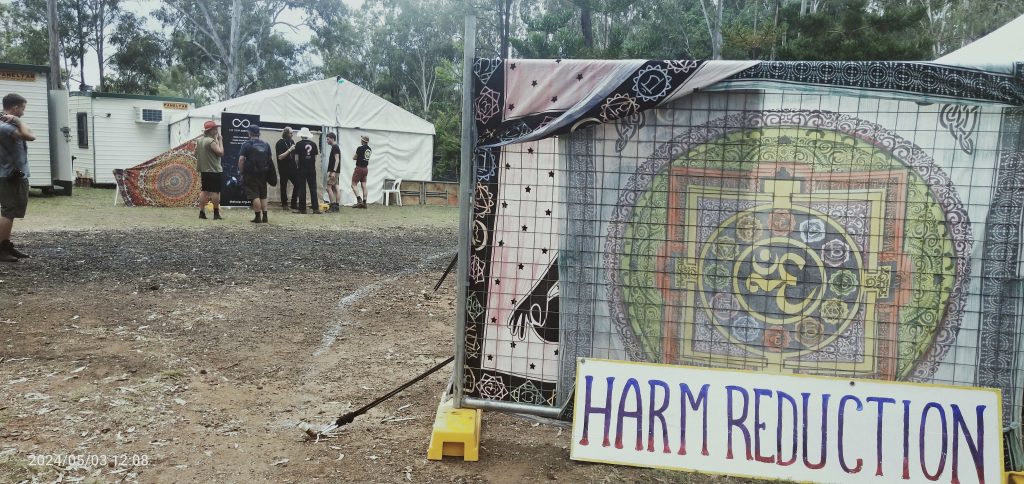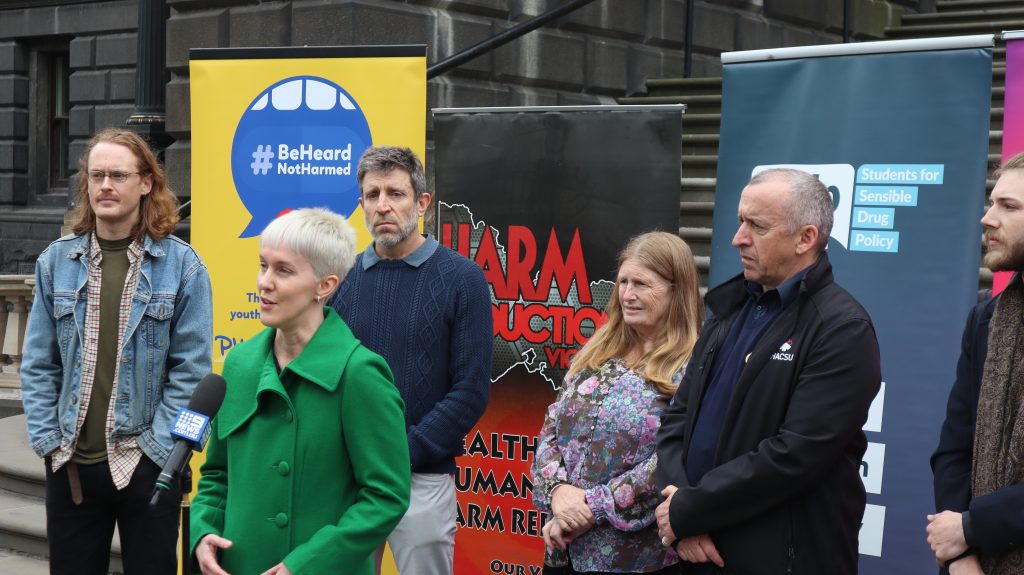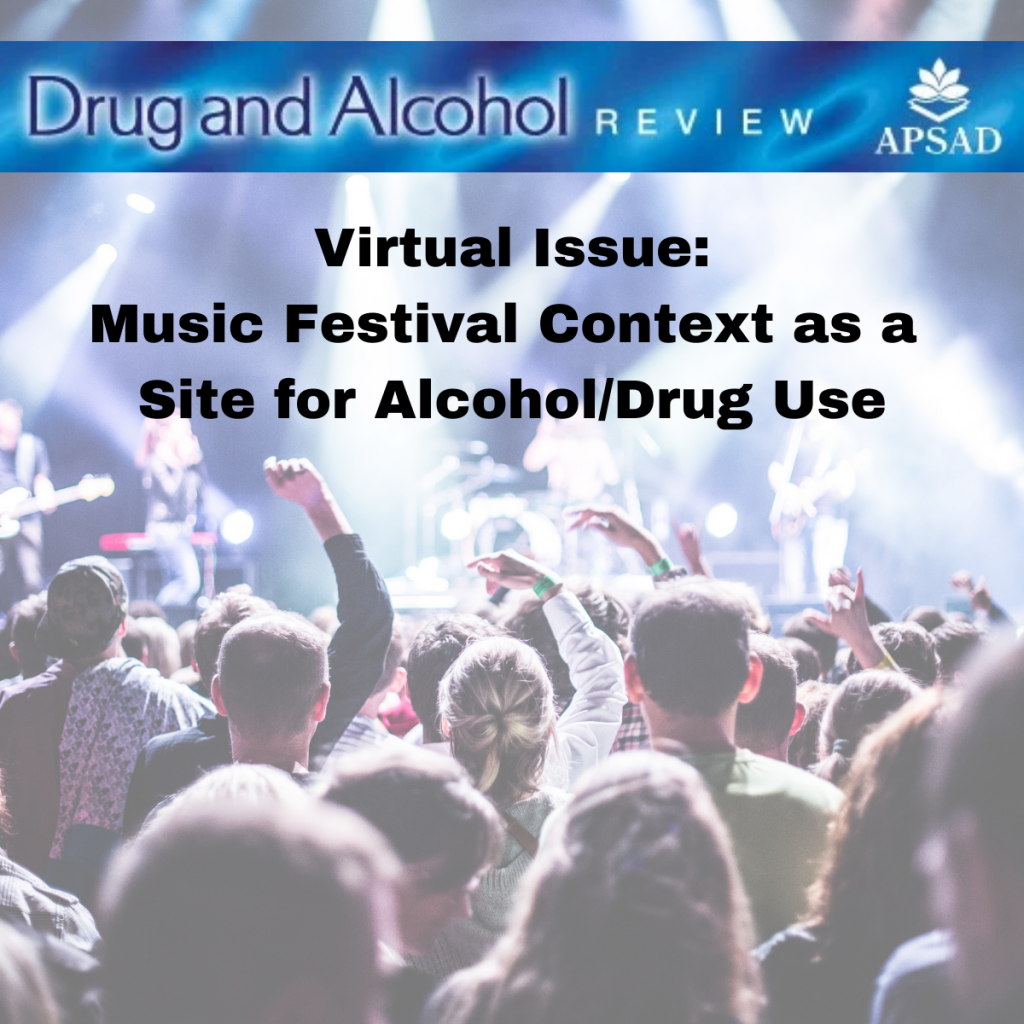As Deputy Editor for Drug and Alcohol Review, I was asked to write an introduction to a virtual special issue collecting papers from the journal published in the last 4 years on this topic. The papers are available for free download here.
The full introduction is reproduced below:
Dance music festivals are typically outdoor events where electronic dance music is performed to large crowds of festivalgoers. These events have emerged as sites of alcohol and other psychoactive substance use, particularly MDMA (or ‘ecstasy’), other stimulants, as well as psychedelic drugs. While some such festivals are single-day events (typically held in urban locations), they are commonly held over multiple days in non-urban locations, with attendees typically camping at the event for 3 to 5 days (sometimes longer). This virtual issue of Drug and Alcohol Review contains 11 papers published in the journal since 2018 on the topic of alcohol and other drug use and harms, and associated policy and monitoring responses, in these festival settings.
Seven of these papers engaged with populations of festival attendees, typically through surveying them to collected self-reported information [1-7]. The typical age of surveyed festivalgoers was young, with median and average ages in the mid-20s across all studies [1-7]. Four of these studies involved in-situ data collection [4-7] – that is, festivalgoers completed the surveys at the festival they were attending – with the remaining three studies conducted through web surveys that asked people to recall and report on their behaviours at previous festival attendances [1-3]. Only one of these studies combined biological measurement with self-report, and in this study, only the use and markers of alcohol consumption were measured [7]. Illegal drug use, and specifically the use of MDMA, was the focus of the remaining 6 studies of festival attendees [1-6]. Event-based measurement – that is, where questions are focused on characteristics of a specific event (usually the current event or the most recent event attended) – was employed among 3 studies [3, 5, 7], while the use of scenarios and measurement of future intended behaviours was employed by 3 studies [1, 4, 6] – all exploring hypothetical responses by festivalgoers to scenarios where drug checking services were available.
Of the 7 articles reporting research with festival attendees, 4 studies were measuring patterns of alcohol and other drug use [2, 3, 5, 7]; in particular, higher-risk behaviours and harm reduction practices. Two papers confirm that double dropping – taking two (or more) MDMA pills or capsules simultaneously – is prevalent among Australian festivalgoers, with Grigg et al. [3] reporting 48% of festivalgoers (who used MDMA) double dropping at the last festival they attended (data collected 2016) and Healey et al. [5] also reporting 48% double dropped (or intended to do so later in the day) at the festival event where they were surveyed (data collected 2019-2020). Healey et al. also reported on the practice of preloading: consuming all of their drugs prior to entering the (single-day) festival. Of the festival-goers who reported drug use during the festival, 33% reported preloading. This behaviour appeared to be related to how the festivals they attended were policed. Those who agreed that knowledge of or anticipation of police or police dog presence at the festival had altered their drug use patterns were at over double the odds (adjusted odds ratio 2.2) of reporting preloading their drugs before entering the festival. While double dropping practices may be based on past experiences of MDMA pills being relatively weak in Australia, with the rise of high strength pills and capsules, double dropping is much more likely to result in MDMA toxicity. Healey et al.’s findings that preloading with drugs prior to events is commonplace and is a response to policing practices is concerning and should spur more urgent action to overhaul such the relatively heavy-handed policing practices that occur at music festivals in Australia.
The web survey of an international sample of festivalgoers (primarily from Spain, USA and Australia) reported by Fernández Calderón et al. [2] focused on harm-reducing practices, such as avoiding mixing depressants (69%) and limiting the quantities of drugs consumed (62%). Overall, fewer adverse health events were reported by respondents who also took harm reducing measures. Norman et al.’s [7] study used multiple measures of alcohol drinking over a prolonged drinking event, finding that a diverse set of 4 measurements contributed unique and valuable information. Importantly – while only conducted with 14 participants – this study demonstrates feasibility of continuous alcohol monitoring and the use of unobtrusive biological techniques among the festivalgoer population.
The remaining 3 papers that engaged festivalgoer populations were focused on how people might respond to a drug checking service [1, 4, 6]. Taken together, in the Australian context where drug checking has been formally available at only two single events in the ACT [8], these studies indicate a strong desire to use drug checking services if available, with an on-site service (94%) somewhat more popular than a fixed-site or off-site (external to the festival) service (85%) [1]. Lack of support for drug checking from government and police was a considerable barrier, with 94% reporting that they would not use a service if there was the possibility of arrest [1]. One political barrier to drug checking introduction has been the contention that drug checking services would increase the use of MDMA among this population, by ‘giving the green light’ to use drugs. Two of these studies provide data to refute this contention [4, 6]. Hollett and Gately [6] found that both people who had never used MDMA and people with MDMA experience reduced their MDMA risk across on-site and fixed-site drug checking scenarios; however, they noted that people with MDMA experience were less likely to reduce risk than MDMA naïve participants in some situations, for example, when the hypothetical drug checking result showed a high strength MDMA pill or a pill substituted with PMA/PMMA. It may be that certain risks (higher strength; PMA/PMMA) may be perceived as less concerning to those with more experience then to those who are MDMA naïve. Murphy et al. [4] report that neither group (MDMA experienced and MDMA naïve) reported an increased intention to use MDMA in scenarios were drug checking was available. Subjective norms (e.g. items like “Most of my ecstasy-using friends tell me that I should test/check the content of my pill before I use ecstasy” [9]) were associated with intended use of both on-site and fixed-site drug checking services. These studies also found that festival goers were willing to co-pay for a drug checking services – $12 [6] or $10 [1] for an on-site test.
The remaining 4 papers that did not report on festivalgoer populations all focused on the topic of drug checking at music festivals, and included: a representative survey of the Australian population measuring attitudes towards drug checking at music festivals [10], two policy analysis papers on the topic of drug checking in the Australian jurisdictions of NSW and the ACT [11, 12], and one paper from Italy reporting descriptive drug sample data from an operational drug checking service [13]. Through these papers we learn that almost two-thirds of the Australian public (64%) support “pill testing at music festivals” while 22% are opposed, 14% neutral and 1% did not answer. Political affiliation was associated with support, with voters for the two main Australian conservative parties the least likely to support this initiative [10]. The two policy analysis papers utilised document analysis to create detailed timelines of critical policy and advocacy events, utilising news coverage, transcripts of television specials on the topic of drug checking, parliamentary transcriptions and reports [11, 12]. Ritter’s analysis of the debate in NSW synthesises the narratives used by those in favour and those opposed to drug checking, finding that both sides appeared to share a basic goal of ‘saving lives’ but as the beliefs and values underlying this goal differed, the debate continued to remain polarised [11]. Sommerville et al. compared one jurisdiction who had successfully supported drug checking (ACT) with one that had failed to do so (NSW) using the Advocacy Coalition Framework [12]. The key difference identified was that the dominant coalition in ACT was health-led, whereas the dominant coalition in NSW was led by law enforcement. For policy change on drug checking to occur in NSW, both core and secondary beliefs of the dominant law enforcement policy required shifting, a shift that rarely occurs [12]. The final paper in this special issue reported on an active drug checking service in Italy in the festival and party context, focusing on the drugs detected and the use of a Raman spectrometer in the field [13]. Raman instruments are often used for policing application (e.g. the “TruNarc”) and are rugged, field-deployable, are not required to touch the drug sample directly and provide fast results. However, the Raman fails to identify substances when present in low quantities or when a novel substance was not available in its spectral library [13]. Raman instruments are likely to be useful among a suite of analytic tools used in drug checking services, rather than as a stand-alone instrument.
This collection contains only 2 papers from outside of Australia – but it should be noted that Drug and Alcohol Review has also recently published Canadian papers on drug checking (just not in a festival context) [14, 15] as well as papers related to similar drug use practices but within the nightclub setting, e.g. in New York City [16-18].
This showcase of festival-related research provides some pertinent information relevant to advocates and policy makers. It demonstrates that the lack of drug checking in most parts of Australia cannot be blamed on a lack of evidence or on a lack of public support. Indeed, the lack of uptake of drug checking may be much more associated with a clash of values and the location of where the most political power currently lies, that is, within coalitions of partners aligned with law enforcement. As festivals begin to emerge again after the easing of pandemic restrictions on large gatherings, we may see further pushes for policy reform, especially in the event of deaths that could be prevented by service provision as well as public drug alerts derived from checking services.
Dr Monica Barratt
Senior Vice Chancellor’s Research Fellow, RMIT University, Melbourne Australia
and Deputy Editor for Drug and Alcohol Review
|



